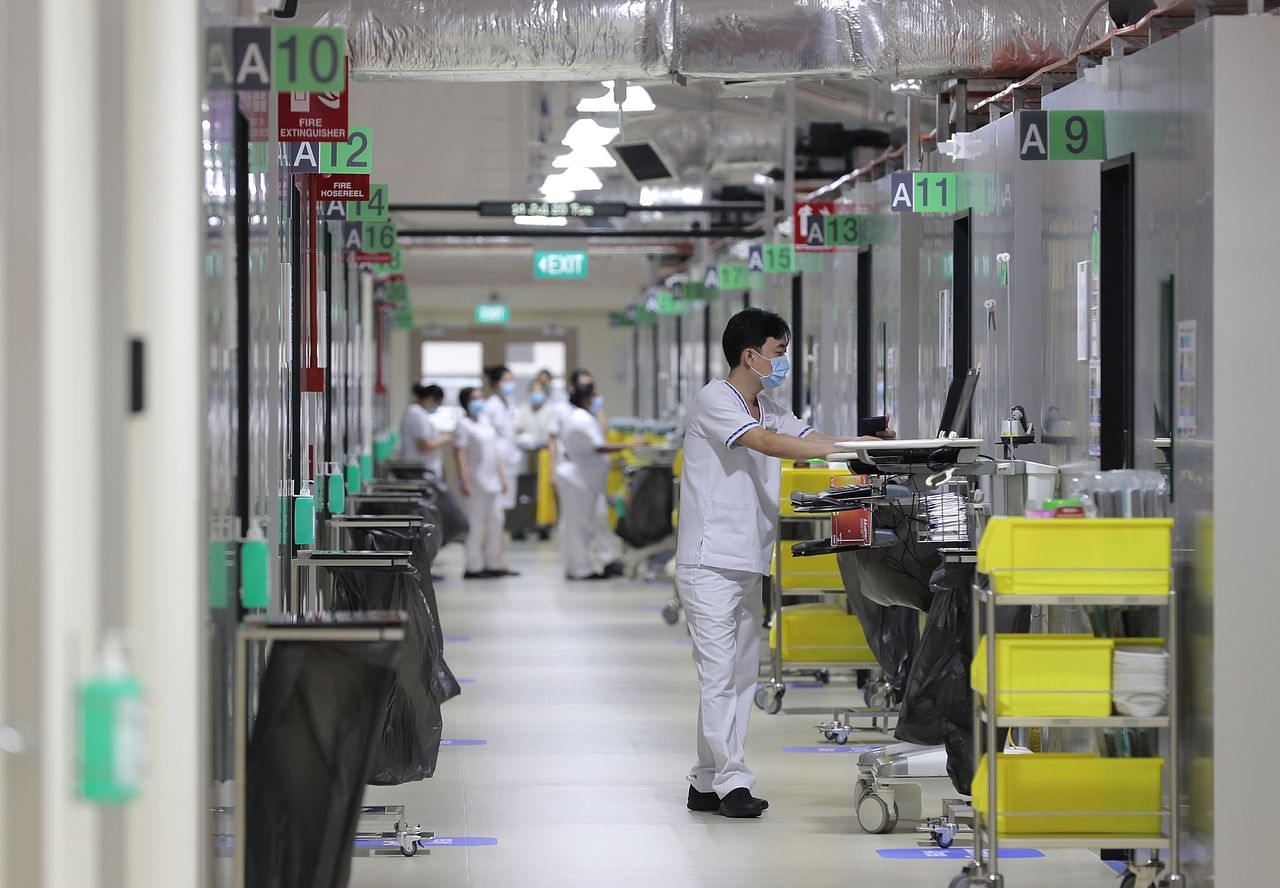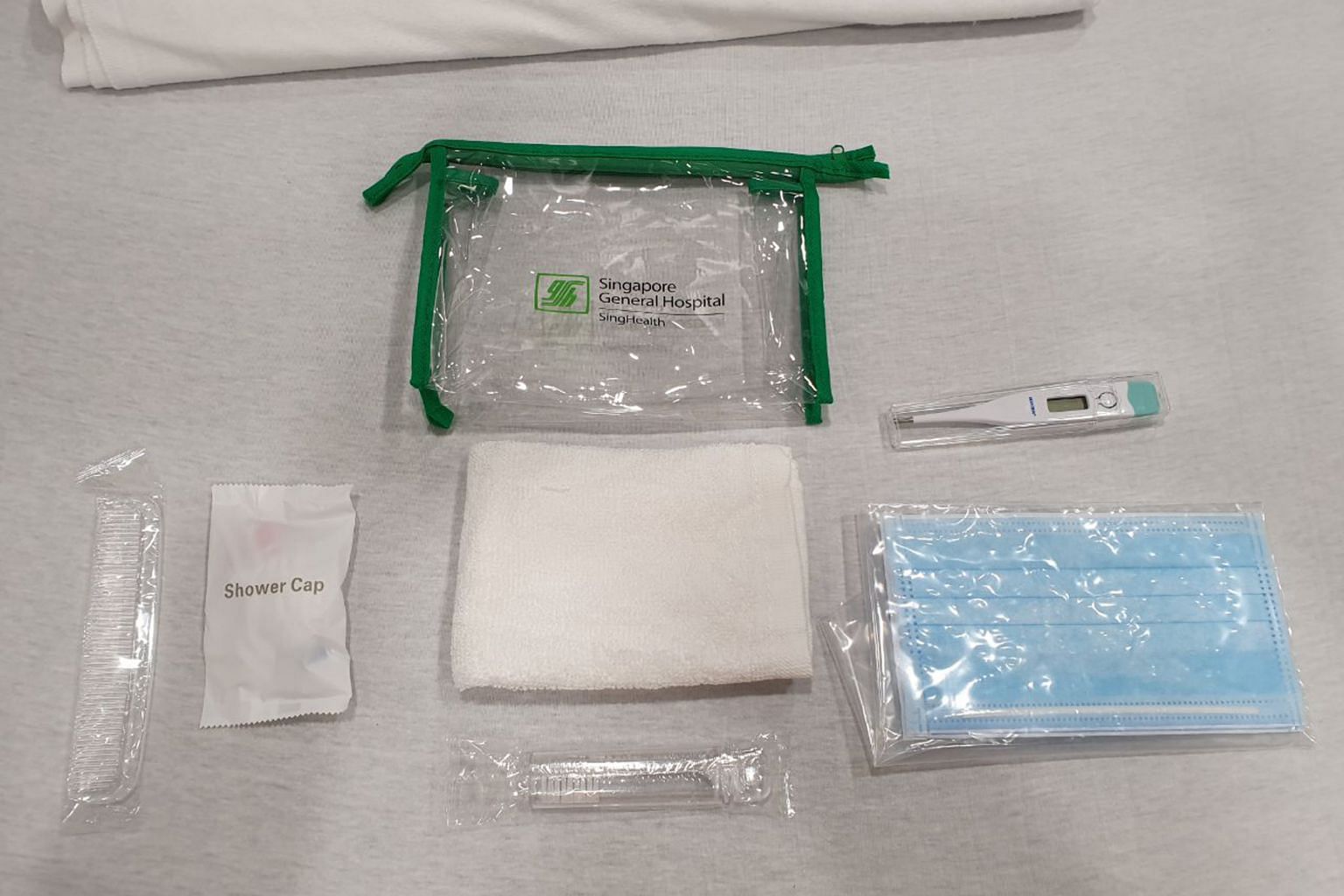With their metallic exterior, the box-like isolation rooms at Singapore General Hospital's newly built Ward @Bowyer resemble futuristic capsules sheltering people from the hustle and bustle of space travel.
And they are indeed the bastions of peace they seem to be, for once I get past the door, it is as if time is standing still.
Bored during the circuit breaker?
Just wait till you are in an isolation room. On Wednesday, I spent four hours in one at Ward @Bowyer, before it took in its first patients.
Patients in the 50-room ward must be able to walk about, take care of themselves and be in a condition assessed as less likely to get worse.
Okay, check, no problem there.
I was ushered into room A6 at 8.20am by two nurses clad in full personal protective equipment after they verified my identification.
Each tightly sealed room - comprising a bed, side table and an attached toilet and shower - is 2.3m by 5.6m, with a height of 2.5m.
It is not the tiniest of rooms, but there is not a lot of space.
The room is kept at a lower pressure than the outside so that viral particles inside will not escape when the door is opened.
Fresh air from outside is pumped into the room, and the contaminated air inside is removed through a negative pressure unit fitted with a Hepa filter at the foot of the bed.
In the room, the nurses took my blood pressure and walked me through the admissions pack, in-room smartphone and a biosensor that must be worn at all times, except when in the shower.

The biosensor is worn around the right wrist like a watch, with the sensor wrapped around the ring finger like a plaster. It wirelessly sends patients' heart rate, respiration rate and oxygen saturation level readings to the clinicians.
That is all well and good, but my chief concern was, of course, Wi-Fi, given that the 3,200 sq m ward is built on a carpark. Fortunately, the Internet connection was decent.
The bed felt hard, but the room was set at a comfortable 24 deg C, and this is adjustable upon request.
After the doctor "checked in" on me at 9am, the lull began. The room was silent except for the air-conditioner's whir and the occasional faint murmur of nurses outside.
The in-room smartphone is a life-saver in all ways. It allows patients to contact the nurses through videoconferencing or via an app if they feel unwell or need assistance.
It also contains nine games for patients to pass the time.
At 9.30am, I started on a word search puzzle and tried other games.
When I looked up from the phone, I thought a good 30 minutes had passed, but it was only 9.40am.
I spent the next 50 minutes attending to pressing e-mails and taking photos and videos of the room.
This passed by quickly.
But the pace became glacial once I was done. Out of sheer boredom, I started to count the number of holes on the Hepa filter.

Wait. Still only 10.50am?
A nurse gave me a thumbs-up through the narrow, transparent window at the door.
I felt a much-needed rush of warmth and human touch.
I returned to the smartphone and browsed the multi-language reading materials. It was another interminable interlude before lunch was dropped off at 11.40am on a chair I had to place at the door.
Before being "discharged", I had to clean my shoes and bag with antimicrobial wipes. Patients will have to clean the bedside table and chair, shower and change before leaving. The room is then disinfected, and any remaining micro-organisms killed by UV light.

I left at noon, after what felt like the longest four hours of my life.
And Covid-19 patients in isolation stay for about 14 days.
I silently vowed to myself that I will wear my mask, observe safe distancing rules and keep to the highest cleanliness standards.











